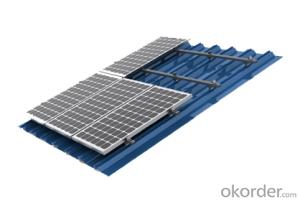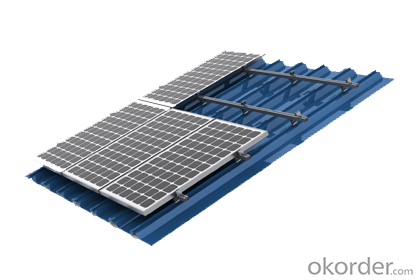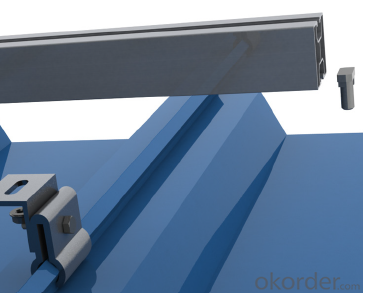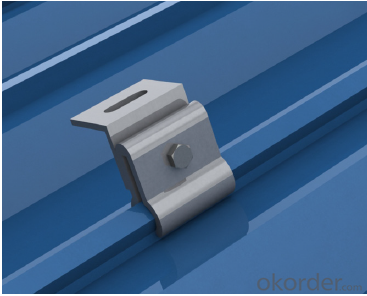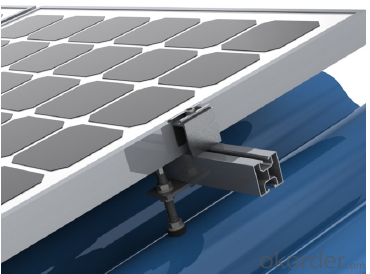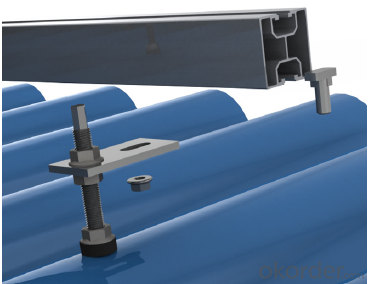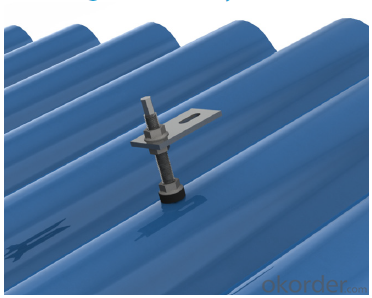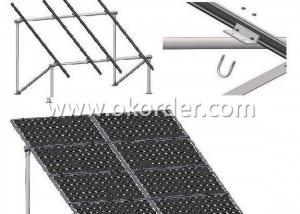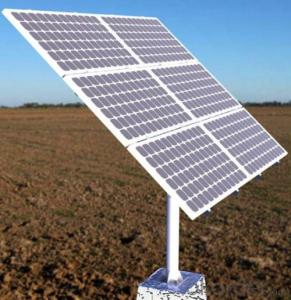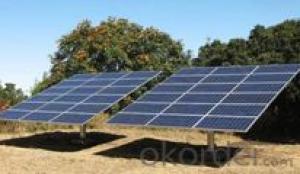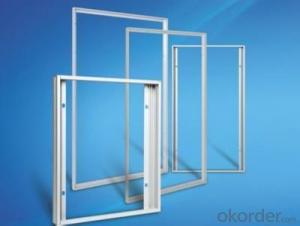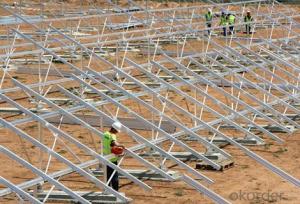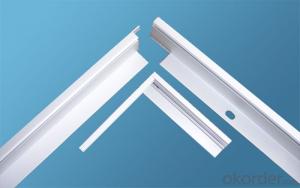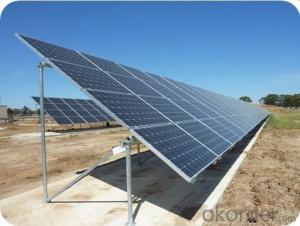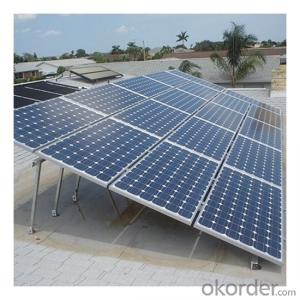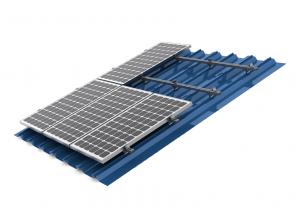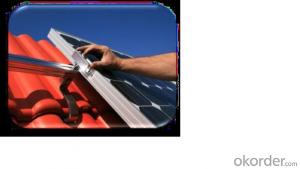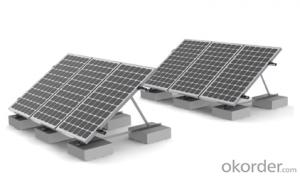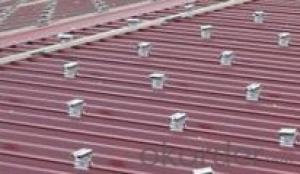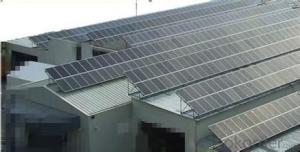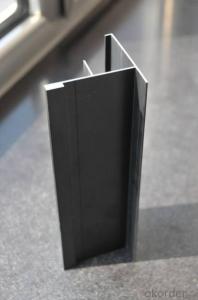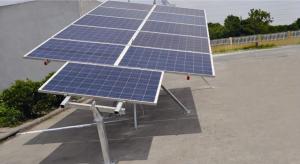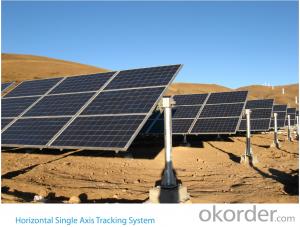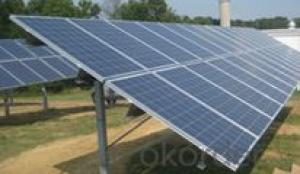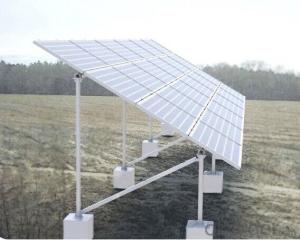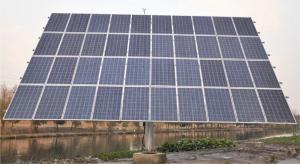Commercial Solar Mounting Systems - Emetal Sheet Roof Solar Mounting System VRSH
- Loading Port:
- Shanghai
- Payment Terms:
- TT or LC
- Min Order Qty:
- 1 set
- Supply Capability:
- 1500SET set/month
OKorder Service Pledge
OKorder Financial Service
You Might Also Like
Product Description:
Metal sheet roof is regarded as one
of the hard cores for roof mounting
system. Versolsolar is able to solve the
difficulty, by using matched clamp
to fix the al-rail on the top of roof,
minimizing the use of materials
• Less piece of components and easy for installation.
• Design speical clamp matching to the metal sheet shape and specification.
• Use super quality Al-alloy and stainless steel for components.
• Wide range of product line .
Technical Data:
Installation site | Metal sheet roof |
Slope of roof | Client requirement |
Module specification | Frame / frameless module, crystalline/thin film module |
Installation type | Parallel to the roof |
Module arrangement | Portrait \ Landscape |
Module area square | Client requirement |
Module area position | Client requirement |
Roof structure | Client requirement |
Loading section | Al 6063 T5 |
Small pieces | Stainless steel, Al6063 T530 |
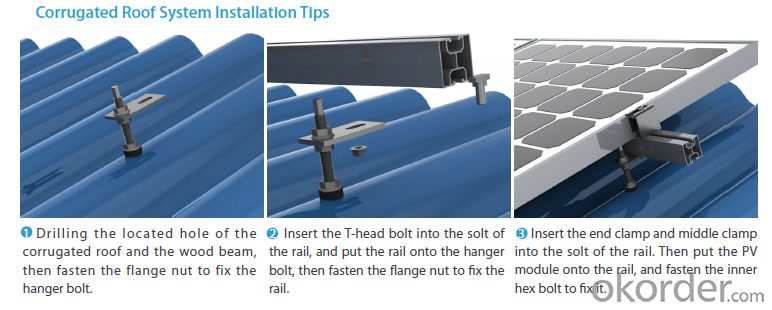
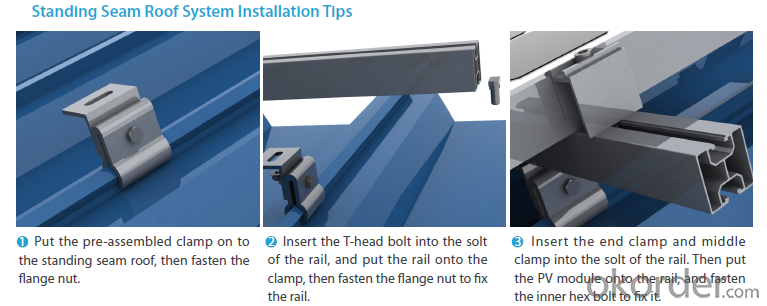
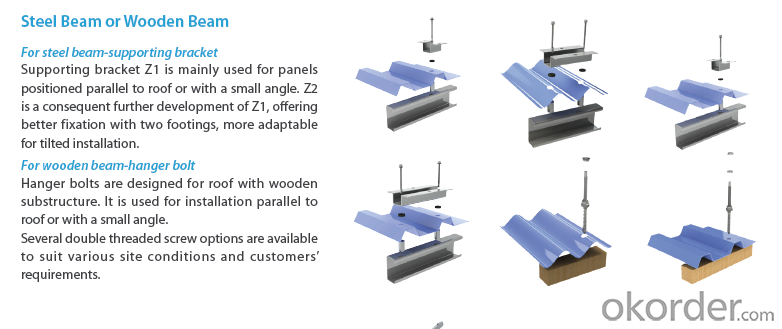
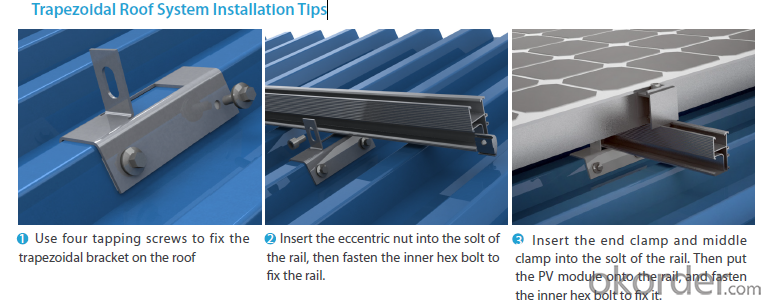

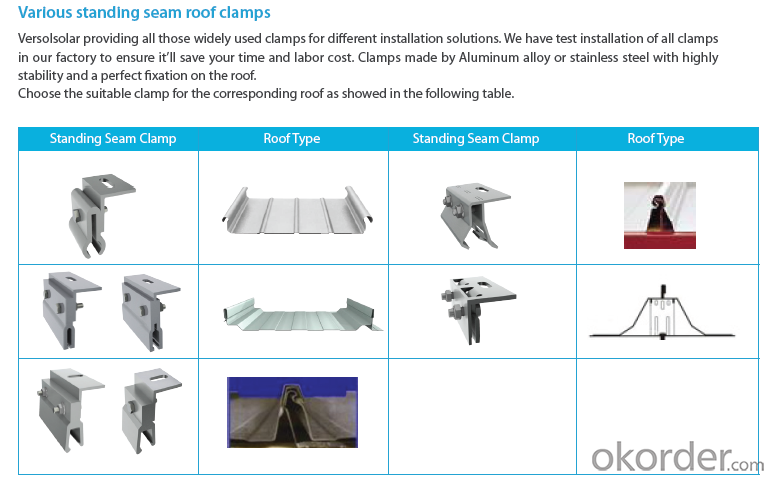
FAQ
I..Will you focus on the safety of the goods during transportation?
Yes, Safety of the cargo is the primary element that we would consider on transportation.
II..How would guarantee the quality will meet the requirements of your clients?
Before shipment, we will have inspection for each batch of goods.
III..What certificates do you have?
IEC,UL,TUV,CSA,etc.
IV..Can you do OEM according to clients’ requirements?
Yes, we have our own brand while we can provide OEM service.
- Q: Can solar mounting systems be installed on historical or protected buildings?
- Yes, solar mounting systems can be installed on historical or protected buildings. However, the installation process may require certain considerations and modifications to ensure minimal impact on the building's historic integrity or protected status. This may involve using non-penetrating mounting techniques, such as ballasted systems, to avoid damaging the structure. Additionally, it is important to consult local authorities and preservation organizations to ensure compliance with any regulations or guidelines specific to historical or protected buildings.
- Q: Can solar mounting systems be installed on carports?
- Yes, solar mounting systems can be installed on carports. Carports provide an ideal structure for installing solar panels as they offer a large, open space and can provide shade for parked vehicles. This allows for efficient use of space and maximizes solar power generation. Additionally, solar carports can also provide additional benefits such as protecting vehicles from weather elements and reducing energy costs by generating clean, renewable energy.
- Q: How does a solar mounting system work?
- A solar mounting system is designed to securely hold solar panels in place and optimize their performance. It typically consists of a structure or framework that is anchored to the ground or a building rooftop. The solar panels are then mounted onto this structure using brackets or clamps. The system is engineered to ensure the panels are tilted at an optimal angle to receive maximum sunlight throughout the day. Additionally, the mounting system provides a safe and stable platform for the panels, protecting them from harsh weather conditions and potential damage.
- Q: Are there any specific requirements for installing solar mounting systems in high-altitude areas?
- Yes, there are specific requirements for installing solar mounting systems in high-altitude areas. These requirements primarily include the need for strong and durable mounting structures that can withstand high winds, extreme temperatures, and potential snow loads. Additionally, the solar panels may need to be tilted at a different angle to optimize sunlight absorption at higher altitudes. It is also important to consider the impact of thinner air on cooling and maintenance of the system. Therefore, careful planning and engineering are necessary to ensure successful installation and performance of solar mounting systems in high-altitude areas.
- Q: Are there any specific requirements for installing a solar mounting system on an agricultural structure?
- Yes, there are specific requirements for installing a solar mounting system on an agricultural structure. These requirements may vary depending on the location, type of structure, and local regulations. Some common requirements include ensuring the structure can support the weight of the solar panels, proper alignment and orientation for maximum sunlight exposure, compliance with electrical and fire safety codes, and obtaining necessary permits and approvals from relevant authorities. It is advisable to consult with a professional installer or local authorities to ensure compliance with all specific requirements.
- Q: Can a solar mounting system be used with tracking systems?
- Yes, a solar mounting system can be used with tracking systems. In fact, many solar mounting systems are designed to accommodate tracking systems, which allow solar panels to follow the sun's movement throughout the day for maximum energy generation. Tracking systems can enhance the efficiency and output of solar panels, making them an ideal complement to a solar mounting system.
- Q: Can a solar mounting system be used in areas with solar incentives for universities?
- Yes, a solar mounting system can be used in areas with solar incentives for universities. These incentives are designed to promote the adoption of solar energy and encourage renewable energy initiatives. By installing a solar mounting system, universities can benefit from these incentives, such as tax credits, grants, or feed-in tariffs, which can help offset the initial installation costs and provide long-term financial savings. Additionally, using solar energy aligns with the sustainability goals of universities, demonstrating their commitment to reducing carbon emissions and promoting environmental stewardship.
- Q: Can a solar mounting system be used in earthquake-prone areas?
- Yes, a solar mounting system can be used in earthquake-prone areas. However, it is crucial to ensure that the system is designed and installed to withstand seismic activity. Specialized mounting systems and installation techniques are available to enhance the stability and safety of solar installations in earthquake-prone regions. These systems typically incorporate features such as reinforced foundations, flexible mounting structures, and seismic restraints to minimize the risk of damage during an earthquake.
- Q: Are there any specific requirements for installing a solar mounting system on a rooftop with antennas?
- Yes, there may be specific requirements for installing a solar mounting system on a rooftop with antennas. It is important to consult with a professional solar installer or engineer to ensure that the solar mounting system does not interfere with the functionality of the antennas. Additionally, local building codes and regulations may have specific guidelines for this type of installation.
- Q: Are there disadvantages to using a ground-mounted solar mounting system?
- Yes, there are some disadvantages to using a ground-mounted solar mounting system. Firstly, ground-mounted systems require a significant amount of land, making them unsuitable for locations with limited space. Additionally, the installation process for ground-mounted systems can be more complex and time-consuming compared to rooftop systems. Ground-mounted systems also need proper maintenance to prevent vegetation growth and shading, which can reduce the efficiency of the solar panels. Lastly, ground-mounted systems may be more susceptible to theft or vandalism due to their accessibility.
Send your message to us
Commercial Solar Mounting Systems - Emetal Sheet Roof Solar Mounting System VRSH
- Loading Port:
- Shanghai
- Payment Terms:
- TT or LC
- Min Order Qty:
- 1 set
- Supply Capability:
- 1500SET set/month
OKorder Service Pledge
OKorder Financial Service
Similar products
Hot products
Hot Searches
Related keywords
